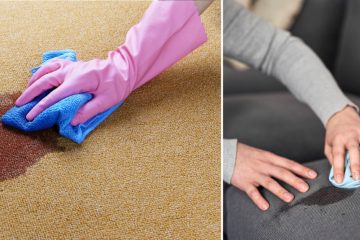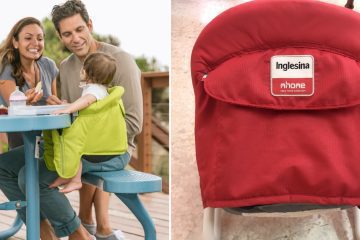Are you tired of looking at your rusty patio chairs that ruin your outdoor ambiance? Do you want to save money and time by fixing them yourself? If so, you are in the right place! Rusted patio chair legs are not only an eyesore, but they can also damage your patio floor, stain your clothes, and even pose a safety hazard if they break. Rust is caused by the exposure of metal to moisture, air pollution, and poor maintenance. If left untreated, rust can weaken the metal structure and create holes in your chair legs.
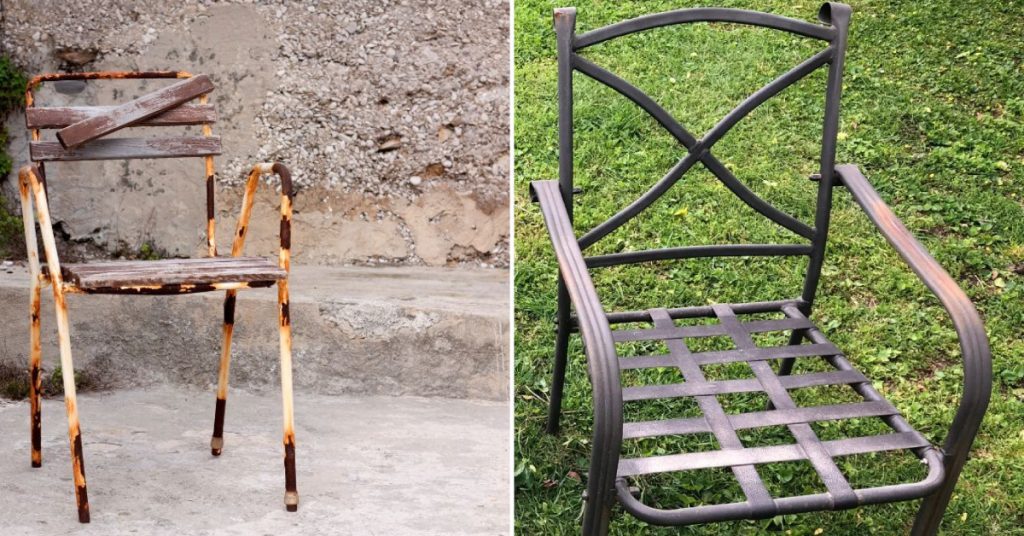
In this blog, we will show you how to fix rusted patio chair legs with 9 easy methods that you can choose from. By following these methods, you will be able to restore your patio chairs to their original beauty and durability. You will also learn how to prevent rust from returning and how to update your chairs with a new paint color for a fresh look.
9 Easy Methods for How to Fix Rusted Patio Chair Legs
Here are the 9 easy methods for how to fix rusted patio chair legs:
Method 1: Remove Rust with Steel Wool or Sandpaper
One of the simplest and cheapest ways to remove rust from metal is to use steel wool or sandpaper. These materials are abrasive enough to scrub off loose rust from the chair legs without damaging the metal surface.
To use this method, you will need the following:
- Steel wool or sandpaper (fine grit)
- Gloves
- Eye protection
- Cloth
Here are the steps to follow:
- Wear gloves and eye protection when working with rust.
- Use steel wool or sandpaper to scrub off loose rust from the chair legs. Apply gentle pressure and avoid scratching the metal surface.
- Wipe the chair legs with a cloth to remove any dust or flakes of rust.
- Use fine-grit sandpaper to buff and polish the chair legs for a smooth finish.
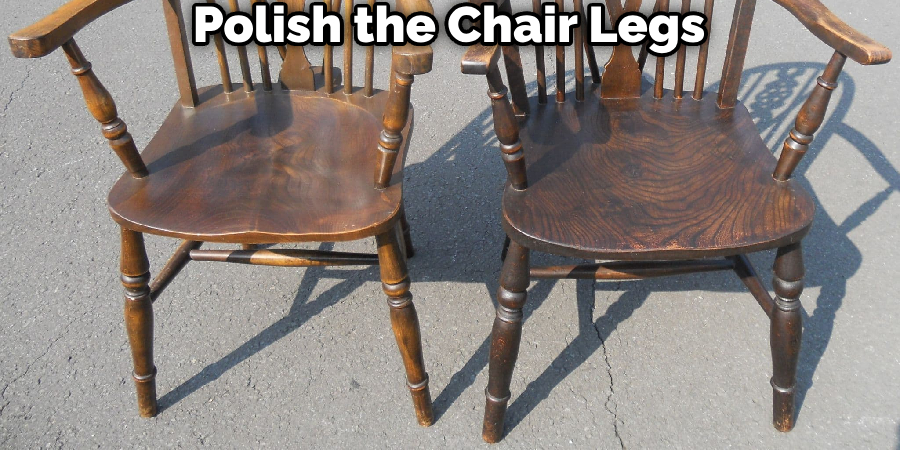
Method 2: Remove Rust with Natural Solutions
If you prefer to use natural solutions instead of chemical products, you can try some of these options:
A. Lemon Juice
Lemon juice is acidic and can dissolve rust from metal. To use lemon juice, you will need:
- Lemon juice
- Spray bottle or cloth
- Oil or wax
Here are the steps to follow:
- Soak a cloth in lemon juice and rub it on the rusted area. Alternatively, using a spray bottle, you can spray lemon juice directly on the rusted area.
- Wipe the chair legs with a cloth to remove any residue of lemon juice and rust.
- Repeat the process if needed until all the rust is gone.
- Coat the chair legs with oil or wax for extra protection.
Tip: Use a designated spray bottle for lemon juice as it is acidic and can damage other materials.
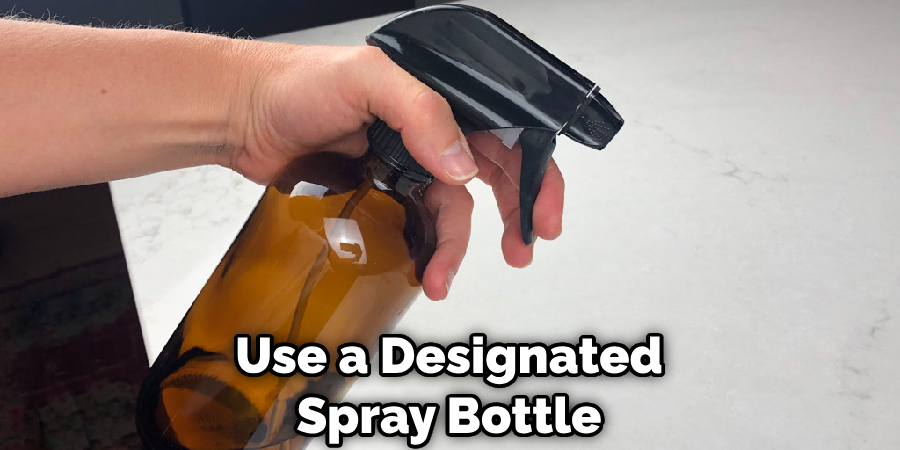
B. Baking Soda
Baking soda is alkaline and can neutralize rust from metal. To use baking soda, you will need:
- Baking soda
- Water
- Cloth or brush
- Steel wool (optional)
Here are the steps to follow:
- Make a paste of baking soda and water and apply it to the rusted area.
- Scrub the paste with a damp cloth or a brush until the rust comes off.
- Rinse the chair legs with water and dry them thoroughly.
- Repeat the process if needed until all the rust is gone.
- Use steel wool for tough rust if necessary.
C. Cream of Tartar
Cream of tartar is a byproduct of winemaking and can remove rust from metal. To use cream of tartar, you will need:
- Cream of tartar
- Water
- Cloth or brush
Here are the steps to follow:
- Mix cream of tartar with water to make a paste and apply it on the rusted area.
- Scrub the paste gently with a cloth or a brush until the rust comes off.
- Dry the chair legs to form a crust of cream of tartar and rust.
- Scrape off the crust with a cloth or a brush and rinse the chair legs with water.
- Dry the chair legs thoroughly and apply a sealant or paint.
Tip: Use cream of tartar for delicate surfaces as it is mild and gentle.
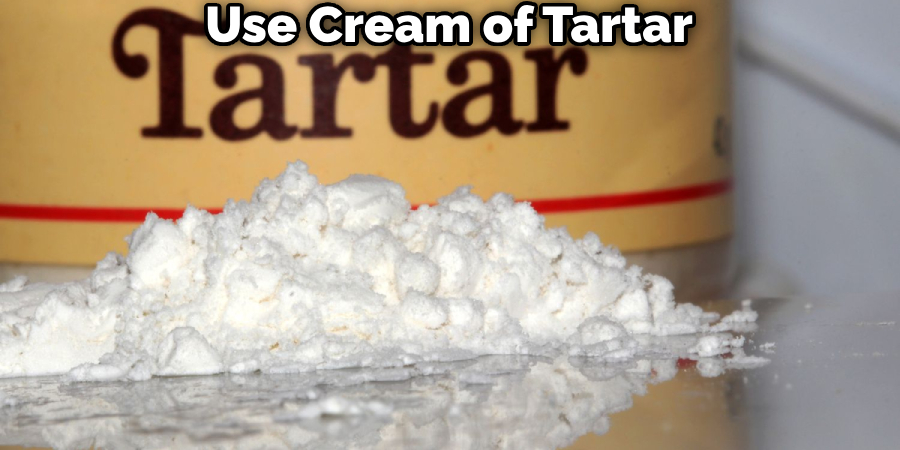
D. Vinegar
Vinegar is another acidic solution that can dissolve rust from metal. To use vinegar, you will need:
- Vinegar
- Spray bottle or cloth
- Oil or wax
Here are the steps to follow:
- Spray vinegar on the rusted area using a spray bottle or soak a cloth in vinegar and rub it on the rusted area.
- Wipe the chair legs with a cloth to remove any residue of vinegar and rust.
- Repeat the process if needed until all the rust is gone.
- Coat the chair legs with oil or wax for extra protection.
Method 3: Remove Rust with Aluminum Foil
Another easy and inexpensive way to remove rust from metal is to use aluminum foil. Aluminum foil is a soft metal that can create a chemical reaction with rust and make it easier to remove.
To use this method, you will need the following:
- Aluminum foil
- Cloth
- Baking soda
- Salt
- Water
Here are the steps to follow:
- Wrap a piece of aluminum foil around a cloth and scrub the rusted area gently with it.
- If the rust is stubborn, you can make a solution of baking soda, salt, and water and apply it to the rusted area before scrubbing it with aluminum foil.
- Rinse the chair legs with water and dry them thoroughly.
Tip: This method is ideal for glass or porcelain surfaces as aluminum foil is soft and won’t scratch them.
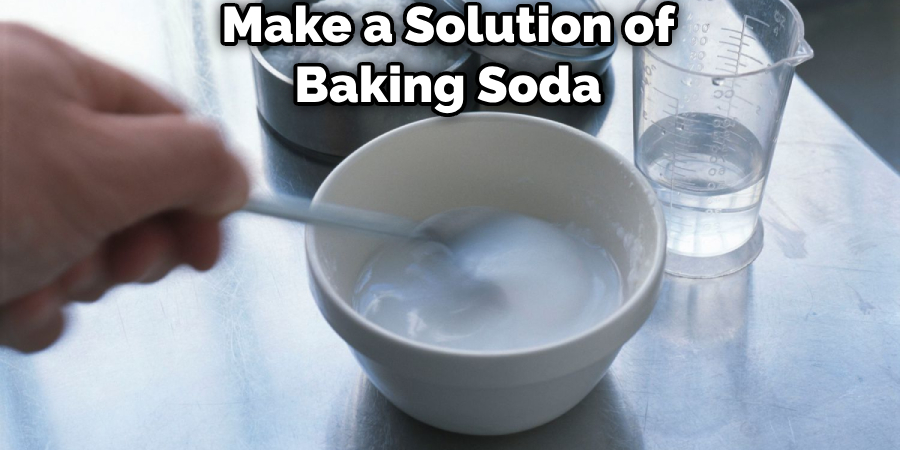
Method 4: Remove Rust with WD-40
WD-40 is a multipurpose lubricant that can also remove rust from metal. WD-40 can penetrate the rust and loosen it from the metal surface.
To use this method, you will need the following:
- WD-40
- Spray bottle
- Brush or steel wool
- Cloth
Here are the steps to follow:
- Spray WD-40 on the rusted area and wait for a few minutes.
- Scrape the rust off with a brush or steel wool.
- Repeat the process if needed until all the rust is gone.
- Remove any excess WD-40 with a cloth.
Method 5: Remove Rust with a Rust Remover Solution
If you want to use a more powerful and effective product to remove rust from metal, you can use a rust remover solution. Rust remover solutions contain chemicals such as phosphoric or oxalic acid that can dissolve rust from metal.
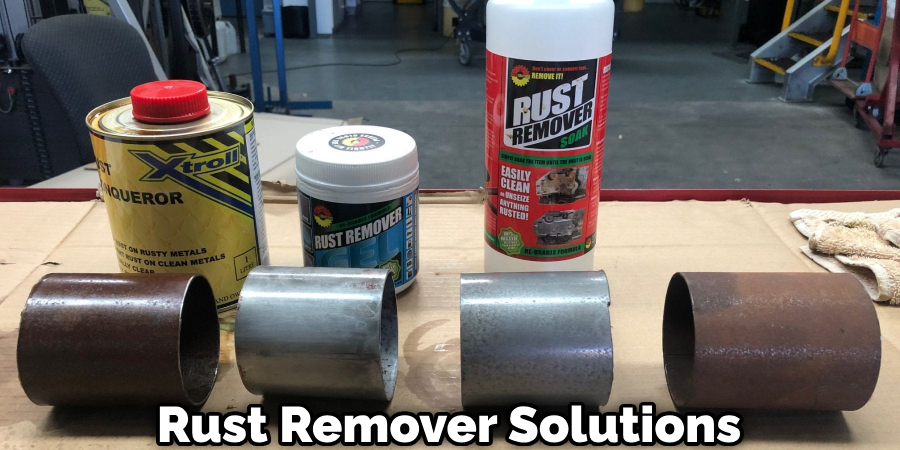
To use this method, you will need the following:
- Rust remover solution
- Gloves
- Eye protection
- Respirator
- Wire brush
- Pad or steel wool
- Water
- Cloth
Here are the steps to follow:
- Follow the instructions on the label of the rust remover solution carefully. Wear gloves, eye protection, and a respirator when using this product.
- Apply the rust remover solution on the rusted area after wire brushing the loose rust off.
- Wait for the recommended time and scrub the rust off with a pad or steel wool.
- Rinse the chair legs with water and dry them thoroughly.
Method 6: Apply a Rust Converter
After removing the rust from the chair legs, you can apply a rust converter product to prevent new rust from forming on the metal surface. Rust converter products contain chemicals that react with rust and convert it into a black coating that protects the metal from corrosion.
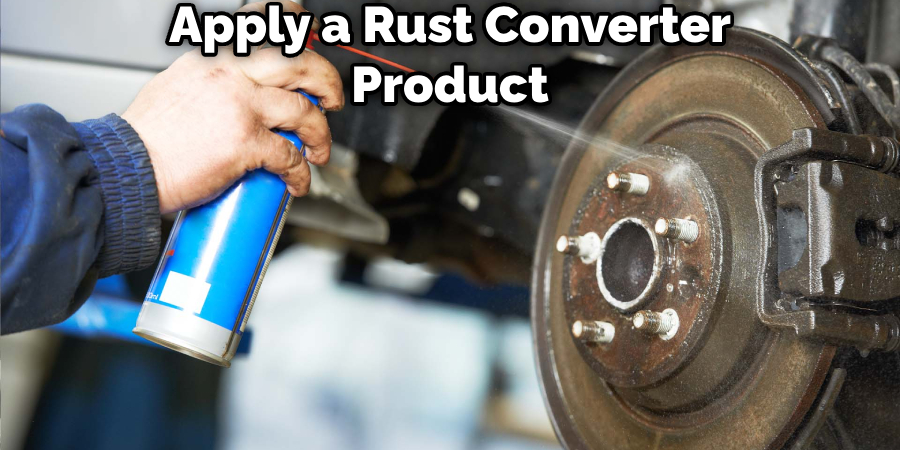
To use this method, you will need the following:
- Rust converter product
- Spray bottle or brush
- Cloth
Here are the steps to follow:
- Apply the rust converter product evenly and generously over the entire surface of the chair legs using a spray bottle or a brush.
- Allow it to dry for at least 24 hours before painting.
- Wipe off any excess product with a cloth.
Tip: Use a spray bottle for corners and crevices where a brush might not reach.
Method 7: Fill Holes with Metal Patch-and-Fill Compound
If your chair legs have holes due to severe rust damage, you can fill them with a metal patch-and-fill compound. The metal patch-and-fill compound is a material that can bond with metal and fill gaps or cracks.
To use this method, you will need the following:
- Metal patch-and-fill compound
- Putty knife or spatula
- Sandpaper (medium-grit and fine-grit)
Here are the steps to follow:
- Apply the metal patch-and-fill compound on the holes using a putty knife or a spatula.
- Scrape off any excess compound and let it dry according to the instructions on the label.
- Sand-dried compound with medium-grit sandpaper until it is flush with the metal surface.
- Smooth the compound with fine-grit sandpaper for a seamless finish.
Tip: You can use Bondo or other similar products as metal patch-and-fill compounds.
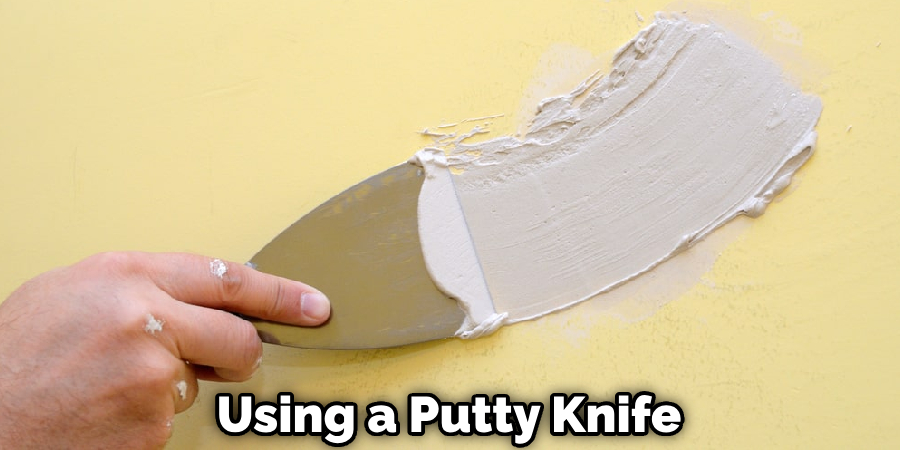
Method 8: Paint the Chair Legs
After removing the rust and applying the rust converter or filling the holes, you can paint the chair legs to give them a new color and finish. Painting your chair legs can also add another layer of protection from rust and weather elements.
To use this method, you will need the following:
- Spray paint or brush-on paint (suitable for metal and outdoor use)
- Primer (optional)
- Rust-inhibiting paint (optional)
- Cloth
Here are the steps to follow:
- Choose a paint color and finish that matches your patio decor and style. You can also update your chairs with a new paint color for a fresh look.
- Shake the spray can well before using or stir the brush-on paint thoroughly. Apply a thin and even coat of paint on the chair legs, covering the entire surface.
- Let the paint dry for the recommended time before applying the next coat. You may need to apply two or three coats of paint for good coverage and finish.
- If you live in a humid area, you may want to use primer and rust-inhibiting paint for extra protection. Apply primer before painting and use rust-inhibiting paint instead of regular paint.
- Wipe off any excess paint with a cloth and let the chair legs dry completely.
Tip: Use primer and rust-inhibiting paint in humid areas to prevent rust from forming again.

Method 9: Wax or Seal the Chair Legs
The final step to fix your rusted patio chair legs is to wax or seal them to protect them from rust and weather elements. Waxing or sealing your chair legs can also enhance their shine and appearance.
To use this method, you will need the following:
- Wax or sealer (suitable for metal and outdoor use)
- Cloth
Here are the steps to follow:
- Apply wax or sealer in thin layers on the chair legs using a cloth. Buff with a circular motion until you get a glossy finish.
- Use carnauba-type wax for extra protection as it is more durable and resistant to water and heat.
- Use grease sealant on corners, joints, and screws where rust can easily form.
- Reapply wax or sealer periodically to maintain protection and shine.
You Can Check It Out to Fix Webbing on Patio Chair.
FAQs About How to Fix Rusted Patio Chair Legs
Can Rusted Steel Be Restored?
Yes, rusted steel can be restored through various methods. Mechanical methods involve scrubbing or sanding off rust, while chemical methods use solutions like vinegar or rust removers. Electrolysis and professional restoration are more advanced options. Preventive measures, like applying coatings and keeping steel dry, help prevent future rusting.
Can Rusted Metal Be Restored?
Yes, rusted metal can be restored using various methods. These include household items like baking soda, vinegar, and lemon juice, as well as abrasive tools and specialized chemicals. The process involves removing the rust and applying protective coatings to prevent further rusting.
Did Vinegar Remove Rust?
Yes, vinegar can effectively remove rust. Its acetic acid reacts with rust to break it down. Submerge the rusty object in vinegar, and brush off the loosened rust. Different vinegar types have various acetic acid content. Distilled white vinegar works well. It has versatile uses, including eco-friendly rust removal and other unconventional applications.
What Chemical Removes Rust From Metal?
Several chemicals can remove rust from metal surfaces effectively. Common options include phosphoric acid, citric acid, oxalic acid, and acetic acid (vinegar). Industrial rust removers are also available. When using these chemicals, follow instructions, wear protective gear, and consider neutralizing the treated area afterward.
Does Vinegar Remove Rust From Steel?
Yes, vinegar can effectively remove rust from steel. By soaking the rusty steel in vinegar, the acetic acid in vinegar reacts with the rust, breaking it down and making it easier to scrub or wipe away. This method is a common and eco-friendly way to remove rust from steel surfaces.
You Can Check It Out to Fix Uneven Chair Legs.
Conclusion
You have learned how to fix rusted patio chair legs with 9 easy methods that you can choose from. You have also learned how to prevent rust from returning and how to update your chairs with a new paint color for a fresh look. By following these methods, you can enjoy your patio furniture without worrying about rust. You can also save money and time by fixing them yourself instead of buying new ones or hiring a professional. We hope you found this blog helpful and informative. Thank you for reading and happy fixing!

